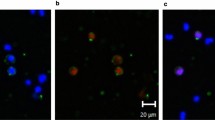Summary
The term biocompatibility describes the interactions between foreign surfaces and humoral or cellular components of the host. One of the best investigated components of biocompatibility is the activation of the alternative pathway of complement. Complement factors activated during hemodialysis with bioincompatible membranes lead to leucopenia and degranulation of neutrophils with subsequent release of proteases and the production of oxygen radicals. There are many studies demonstrating an induction of cytokines such as interleukin-1 or TNF by the dialysis procedure; possible mechanisms are complement factors and transfer of endotoxins from the dialysate. Despite of a large number of studies demonstrating an activation of numerous biological systems by hemodialysis, prospective, randomized studies showing an effect of biocompatibility on mortality or morbidity are scarce and contradictory. There appears to be an advantage of synthetic membranes in patients with acute renal failure regarding mortality and recovery of renal function; however, because of questionable methodology, the existing studies are far from proving this hypothesis.
Zusammenfassung
Der Begriff der Biokompatibilität bezeichnet die Interaktionen zwischen künstlichen Oberflächen und humoralen oder zellulären Komponenten des Patienten. Zu den am besten untersuchten Auswirkungen der Hämodialyse gehört die Aktivierung des alternativen Komplementweges. Während der Hämodialyse mit Cuprophan-Membranen führen aktivierte Komplementfaktoren zur Leukopenie und zur Degranulation von Neutrophilen mit Freisetzung von Proteasen und Sauerstoffradikalen. Auch andere Mediatoren wie Bradykinin oder Lipooxygenase-Produkte werden durch bestimmte Membranen stimuliert. Eine Induktion von Zytokinen während der Hämodialyse kann als gesichert angesehen werden: Mögliche Mechanismen sind Komplementfaktoren und Transfer von Endotoxinen vom Dialysat- in das Blutkompartment. Trotz der Vielzahl an Studien, die in vitro und in vivo eine Aktivierung verschiedener biologischer Systeme nachwiesen, existieren nur wenige (und widersprüchliche) prospektive, randomisierte Studien, die einen Einfluß der Dialysemembran auf Mortalität und Morbidität von chronischem Dialysepatienten untersucht haben. Bei Patienten mit akutem Nierenversagen scheint es – obwohl nicht unwidersprochen – Hinweise zu geben, daß die Verwendung von synthetischen Membranen einen positiven Effekt auf Mortalität und Wiedererlangung der Nierenfunktion hat. Die vorliegenden Studien sind jedoch aus methodischen Gründen weit entfernt davon, hierfür einen Beweis erbracht zu haben.
Similar content being viewed by others
Author information
Authors and Affiliations
Additional information
Eingegangen: 23. September 1996 Akzeptiert: 8. November 1996
Rights and permissions
About this article
Cite this article
Schindler, R. Biokompatibilität von Dialysemembranen. Intensivmed 34, 51–57 (1997). https://doi.org/10.1007/s003900050021
Issue Date:
DOI: https://doi.org/10.1007/s003900050021




